![]()
45 games into the Colorado Avalanche’s season, their woes continue and the speculation mounts on why the team is struggling. It’s worth the time to step back from the ledge and analyze what’s really happened at the midway point. Yes, the team has gone 1-7-2 in their last 10 games. Since Dec. 1, the Avalanche have gone 5-11-3 and fallen to a wild card spot after contending for a first-place spot in the division earlier in the season.
There are reasons for concern. But there is also time and opportunity to right the ship.
Goaltending Has Struggled
Something happened with the goaltenders heading into December. Entering the Calgary Flames matchup, Avalanche netminders boasted a dismal .874 save percentage (SV%) from Semyon Varlamov and an .884 SV% by Philipp Grubauer since Dec. 1. It’s hard to win with those kinds of numbers. The fall has been precipitous, especially for Varlamov who once sat atop the leaderboard in both saves and goals-against average. He’s since fallen to 37th with a .909 SV% for the season.
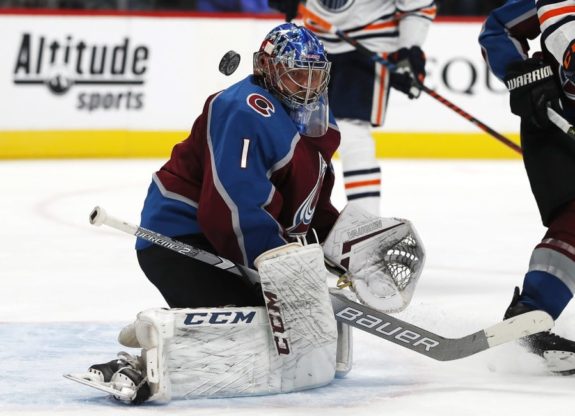
Grubauer has been a little more puzzling. He looked to be working hard at finding his groove with the new team and had rough moments out of the gate. However, he also had flashes of brilliance and managed to find ways to win early in the season. But his numbers are disturbing. His season save percentage is .895, 59th in the league.
Lest one thinks the Avalanche should have kept Jonathan Bernier or Calvin Pickard, both of whom rank below Grubauer in save percentage. Bernier sits in 61st place and Pickard’s at 75th. The caveat – both of their teams are struggling and are nearly out of the postseason race in the Eastern Conference.
As for Varlamov, the only time he finished a season with a sub-.900 SV% was the disastrous 48-point season two years ago when he was injured and only played 24 games. It’s fair to point out that the Avalanche have a much-improved defense since then. There’s also no arguing the talent has improved since the days of Fedor Tyutin and Patrick Wiercioch on the blue line, which makes the drop-off more concerning.
Meanwhile, Grubauer has never before had a save percentage below .900 before. Aside from injury, there’s no reason for this kind of performance. In the last six games, Colorado has outshot their opponents by an average of 12 shots per game. The team has three points in those six matchups.
For most of December, there were other contributing factors to the slide, so the entire blame does not rest on goaltending. But six weeks of sub-.900 SV% is not going to help a team reach the postseason. And in two of those games (against the Winnipeg Jets and Flames), the Avalanche could have hoped for an .800 SV% and they might have still gotten a win or two.
In those two matchups, the goaltending was highly suspect. Grubauer saved only 14 of 20 shots on goal against Winnipeg, for an even .700 SV%, while Varlamov did marginally better against Calgary, stopping 11 of 15 shots for a .733 SV%. The rest of the team has improved since the Christmas break while the goaltending appears to be sliding disastrously downhill.
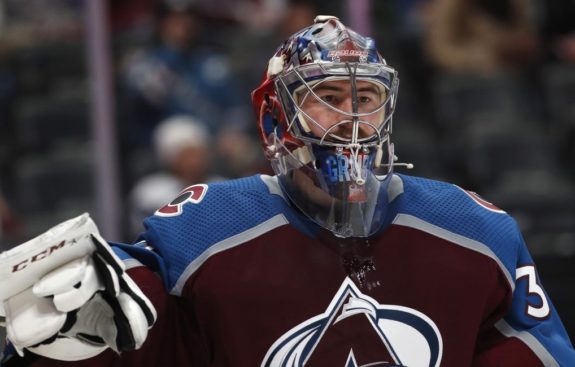
Since both goaltenders have a history of success, it may be time to question what’s going on with the coaching. Either the netminders are playing injured or the instruction they are getting isn’t working. But it’s time to stop the bleeding. The rest of the team deserves to have a chance for their effort to be rewarded. Sub-.800 goaltending isn’t going to cut it when the rest of the team is fighting to regain their earlier form.
Six weeks is too long a time frame for this not to have been addressed. That’s not a slump. That’s a structural problem. Either goaltending coach Jussi Parkilla figures out how to help Varlamov and Grubauer rediscover their games or the Avalanche need to find someone else who will. The team has worked too hard to let a chance at the postseason slip away.
Special Teams Need to Improve
It’s been said before, but the Avalanche special teams have taken a nose dive. The power play over the last six games has scored only five times on 31 chances. While not atrocious, there’s a big difference between scoring 16 percent of the time on the power play and the nearly 30-percent pace they set at the beginning of the season.
Meanwhile, the penalty kill has dropped off a cliff. In the last six games, Colorado has surrendered a goal when shorthanded nearly 39 percent of the time. That’s awful. Clogging the defensive lanes alone has not been working well. Yes, they have been playing some good teams, but the faster skilled game thrives on making teams pay for taking penalties to slow them down. If the Avalanche are not converting on the power play and instead are allowing cheap goals on the penalty kill, it’s going to hurt.
In the last six games, the Avalanche have drawn 31 penalties and committed 18. Yet, they only scored five times on the power play and allowed seven goals on the penalty kill. Quality opponents will seize on that disparity and push the Avalanche around until Colorado gets frustrated and commits a dumb infraction.
The biggest challenge with the special teams, though, rests with the structure. Teams obviously studied the Avalanche’s power play and penalty kill and aim to disrupt their structure. Colorado hasn’t adapted to the push-back. While execution is part of the problem, the success earlier in the season actually indicates personnel is less of the issue than the inability for the Avalanche to change up their system.
Good teams will adapt as their opponents punch holes in their structure. The coaching staff needs to devise ways of adapting to their opponents’ changes that works with the skillsets on the team. It’s a simple solution, but not an easy one.
Injuries Hampered the Avalanche
The Avalanche suffered a couple of key injuries in December that have impacted the way the team plays. The following players sustained injuries last month and missed substantial time – defensemen Mark Barberio and Nikita Zadorov and forwards Valdislav Kamenev and Colin Wilson. Kamenev is likely out for the season with shoulder surgery but the other three are finally returning to the lineup. It may take a few games for them to return to their pre-injury form though.
The injured personnel created an issue. Wilson and Zadorov both play a physical game. While they may not dominate in the fancy stats, they open up the ice for the other players to flash their speed and skill.

They also made sure other teams knew there would be repercussions for questionable play. Kamenev was a big body and was adapting well to his fourth-line role before he was hurt and he was also a good two-way player capable of using his size to push the play.
The Avalanche are currently the second-youngest team in the NHL, the fourth-shortest and near the bottom of the league in experience. Having a couple of physical players helped offset the youth and size concerns. Learning how to work through adversity as a team should help overcome the experience issue.
Coaching Must Adapt
The coaching issue presents some interesting challenges. They all did a good enough job at the beginning of the season to help the team get off to a hot start. However, a fair number of the Avalanche’s struggles center on their lack of adapting to how teams have started to play them.
For example, consider the their drop pass on the power play. Initially, it worked well to have Tyson Barrie or someone else take the puck and drop it back to the speedy Nathan MacKinnon to bring it through the neutral zone. However, in the last month, teams have changed how they play Colorado. Foes are now charging the initial puck carrier and preventing him from making the drop pass, hemming the Avalanche in their own zone while on the power play. Has the team changed anything? Not yet. That’s on the coaches.
They have also pretty consistently stuck with Barrie on the first power-play unit. However, he is not the best shooter on the team. Mikko Rantanen and MacKinnon both have pretty lethal shots. It would make sense to ensure they are the ones shooting on net during the man advantage. Yet the team continues to have Barrie shoot from the point, hoping for a tip in traffic. Again, that’s by design. That’s a coaching issue.
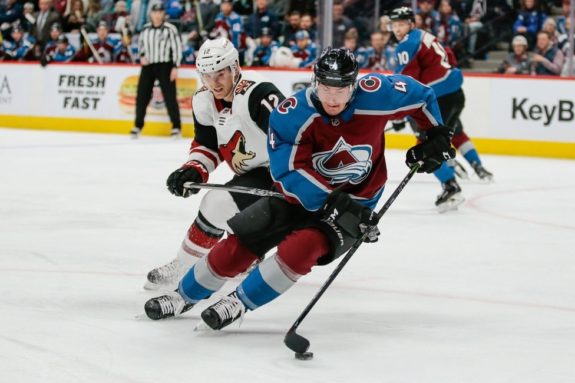
Also, whether Barrie should be on the first power-play unit should be reconsidered. Barrie can shoot but he is a defensive liability. If he loses the puck, it creates chances for their opponents.
Continuing to use the same strategies that teams have adapted for and hoping for different results is all on the coaches. It’s time to give the players some new strategies to work with instead of expecting them to make broken schemes work. Adapting during the game is part of a coach’s job. Recognizing and seizing on opponents’ weaknesses and utilizing one’s own strengths to its best advantage in a dynamic game situation is supposed to be the role of the coaching staff. So far, they seem to have trouble changing their mindset.
But not all is lost. First, the Avalanche are a good enough team that it’s reasonable to argue about whether they are adapting. That’s a huge leap forward from three years ago.
Second, when MacKinnon blew up in frustration, it could have created issues for the team. But some good revelations came out of the brouhaha. He showed he cared about losing, which was a concern when the team had been struggling. Gabriel Landeskog tried to re-direct MacKinnon, showing leadership and active engagement. MacKinnon quickly and publicly apologized and restated his belief in Coach Bednar. And, in a less publicized interview, defenseman Ian Cole talked about how the team was hanging together despite the tough stretch.
Despite having struggles, this team is still engaged. They haven’t checked out. And they aren’t hanging each other out to dry. Instead, they are continuing to draw together and move forward as a unit. The coach still has the team and the locker room hasn’t become toxic. Again, huge steps forward for a group that looked like a disorganized mess in the last year of Coach Roy’s tenure. The coaching staff deserves credit for somehow maintaining unity in the face of continuing adversity.
Defense Has Recovered
The defense played poorly in early December. Sometimes one wondered if the Colorado goaltenders felt like they were in a shooting gallery. Even when the Avalanche were outshooting their opponents, they gave up easy chances on breakaways, which frequently ended up in the back of their own net.
Early in the season, one of the bigger challenges for the top line was their inability to drop back and actually engage in defensive play when they lost possession of the puck. However, the Avalanche have adapted over the last few games. MacKinnon actually backchecked a guy out of taking a shot on goal and other forwards like Alexander Kerfoot have been doing the same. This was a key element missing from their game earlier in the season and has changed in the past couple of weeks.
Both the defensive structure and the commitment from forwards to actually constructively engage defensively has helped limit the number of shots surrendered in the last two weeks. It also hasn’t come at the expense of taking their own shots on goal. Heading into their road game against the Toronto Maple Leafs, the Avalanche have outshot their opponents by an average of 12 shots per matchup in the last six games.
It’s worth noting that Cole leads the league in blocked shots while Zadorov leads the team in hits (even after missing 11 games).
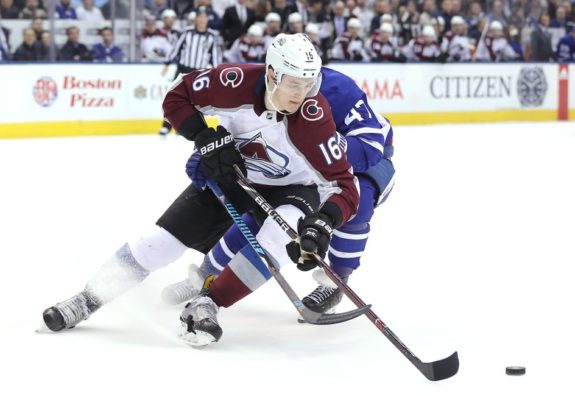
Having a healthy back end, with options for depth and situational matchups, should help the Avalanche continue to improve on the back end. And Ryan Graves, the rookie call-up, has shown to be an improvement over previous season’s options.
Secondary Scoring Returned
There’s been a lot of talk about the lack of secondary scoring. However, in the last six games, secondary scoring has accounted for 10 of the 19 goals notched. In fact, 10 players who are not members of the top trio have tallied points in those six contests. While there may have been challenges earlier in the season, that no longer appears to be an issue.
Tyson Jost has scored two goals and contributed two assists while linemate Kerfoot notched a goal plus an assist and J.T. Compher added two assists.

Carl Soderberg tallied two goals with an assist while linemate Matt Calvert scored a goal and two assists and Matt Nieto earned an assist. That’s two scoring forward lines outside of MaKinnon-Rantanen-Landeskog. Against the San Jose Sharks, the top line didn’t notch a point but the Avalanche still scored four goals. That’s been a long time coming.
But the forwards are not alone. The defensemen have finally stepped up their game, combining for four goals and eight assists. Barrie has a goal and six assists (five from power plays) with rookie Graves notching two goals and the veteran Erik Johnson getting a goal and two assists. Even Samuel Girard managed to get on the scoresheet with an assist. When the defensive game improves, they can push the game into the offensive zone and good things happen. That, too, has been a long time coming.
The Top Line Keeps Scoring
The Avalanche have the second-best scoring line in hockey. It’s a strength. For all the concern about the past month, it’s important to note the top line has started scoring again. And shooting the puck.
It’s no longer a surprise the Avalanche have some good players. MacKinnon-Rantanen-Landeskog are all having career seasons and each is in the top-five of some NHL scoring category, sometimes competing against each other. Teams know that and they have adapted for them. Yet, the top trio continues to power through and find ways to score. It must build some confidence as they face off against some of the best players in the league and still find ways to bring the heat.
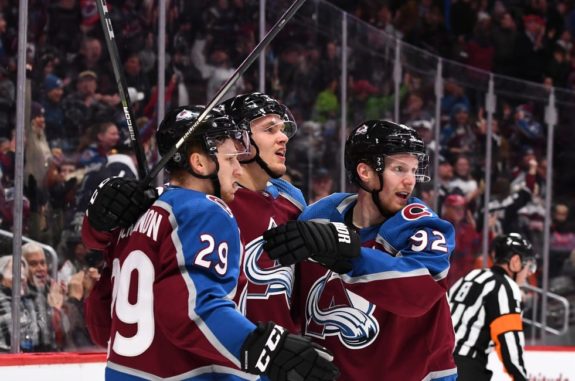
All three are going to the All-Star Game. It’s the first time in 15 years the Avalanche have sent three players to the festivities. Each player earned a spot there. Despite everything that has gone wrong in the last six weeks, these three have managed to keep fighting through the adversity, setting a tone for the rest of the team. That’s called character, and it’s a hallmark of true leadership.
Despite all the things the Avalanche have yet to address, it’s important to remember this team’s resilience. They have weathered a string of losses and yet still sit in a wild card spot. When was the last time one could say that about the Avalanche?
Are their holes? Yes. Do they need to adapt? Yes. But remember, many ‘experts’ didn’t even believe this team would come near the playoffs this season. Whether or not they will make them remains to be seen, but even if they don’t, there is still plenty of room for hope.
Next season, the Avalanche could have five first round draft picks not currently playing on the team in training camp – Martin Kaut, Cale Makar, Shane Bowers and the two picks from the upcoming draft. Hopefully, the Avalanche stay the course on the youth movement and don’t make any dramatic moves to jeopardize their future before the trade deadline.
In the meantime, with youth and inexperience comes a lot of highs and lows. It’s going to be an interesting ride from here to the end of the season. Just remember to buckle up and stay the course. Development has a price.